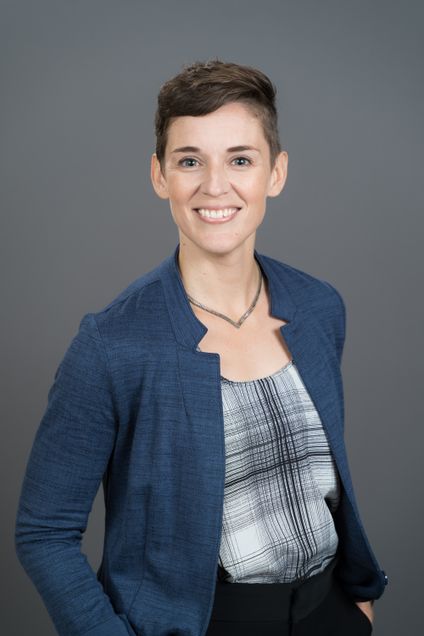So much for flipping through old copies of National Geographic and People. For the past 18 months, many of us have counted off the minutes before our healthcare appointments in virtual waiting rooms. According to a February 2021 study in Health Affairs, more than 30 percent of COVID-era outpatient visits have been conducted remotely.
The pandemic may have turned telehealth into an essential connection between doctors and patients, but many, including speech-language pathologist Kimberly Dahl, have worried it’s an inferior replacement for in-person visits.

When COVID lockdowns began, Dahl (’24) was a clinical fellow at Oregon Health & Science University’s voice and swallowing clinic—and was accustomed to sitting in the same room as her patients, watching and listening carefully to monitor voice conditions. Suddenly, she was analyzing them through a video conferencing program.
“It raised the question of how reliably and how well we were hearing someone’s voice through these platforms,” says Dahl.
There were plenty of glitches during the switch to virtual sessions, too, including some specific to diagnosing voice disorders. Not all the tasks on the auditory-perceptual voice evaluation—a standard test to help measure the characteristics of a patient’s voice—worked well on web conferencing platforms. When patients were asked to hold a vowel or tone, the programs’ background noise suppression software would mistakenly kick in—there are ways to shut it down in advance—and the call would go silent.
“It’s fairly universal among voice clinicians to wonder about the nature of the voice through these electronic means, how that affects our practice,” says Dahl.
It turns out those worries are largely unfounded. Now a doctoral student in Professor Cara Stepp’s Sensorimotor Rehabilitation Engineering Lab, Dahl recently helped wrap up a study on the reliability and effectiveness of remote voice evaluations. She and her fellow BU researchers—including Lauren F. Tracy, a BU School of Medicine assistant professor of otolaryngology, and Daniel Buckley, a Boston Medical Center speech-language pathologist—found clinicians were as accurate online as they were in person.
For the study, Dahl had 10 speech-language pathologists and 10 laryngologists review prerecorded voice samples from 20 patients. The patients had a range of common and rare issues, including those related to tension in the larynx and neurological conditions, such as Parkinson’s disease. Dahl compared assessments of the original, high-quality samples to the clinicians’ evaluations of the same voices when broadcast via two popular web conferencing platforms.
“There was no statistically supported difference across the platforms in comparison to in person,” says Dahl. “It gives clinicians some confidence that this tool that we rely on so much, our ear, is something that we can use reliably in telepractice.”
That’s significant not just for the duration of the pandemic, she says, but for expanding care beyond it. If telehealth is as effective as in-person care for certain tests or appointments, it can allow clinicians to help patients they might typically not see, such as those with mobility issues or who live in rural areas.
“To think that we can continue to reach those patients who might otherwise not get voice care, that’s important.”
